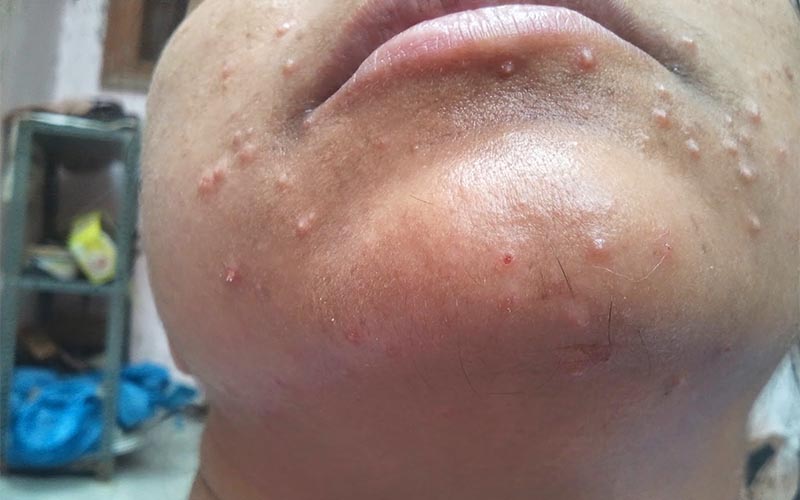A wart is a skin growth caused by some types of the virus called the human papillomavirus (HPV). HPV infects the top layer of skin, usually entering the body in an area of broken skin. The virus causes the top layer of skin to grow rapidly, forming a wart.
Most warts go away on their own within months or years.
Warts can grow anywhere on the body, and there are different kinds. For example, common warts grow most often on the hands, but they can grow anywhere. Plantar wartsgrow on the soles of the feet.
How are warts spread?
Warts are easily spread by direct contact with a human papillomavirus. You can infect yourself again by touching the wart and then touching another part of your body. You can infect another person by sharing towels, razors, or other personal items. After you've had contact with HPV, it can take many months of slow growth beneath the skin before you notice a wart.
It is unlikely that you will get a wart every time you come in contact with HPV. Some people are more likely to get warts than others.
What are the symptoms?
Warts come in a wide range of shapes and sizes. A wart may be a bump with a rough surface, or it may be flat and smooth. Tiny blood vessels grow into the core of the wart to supply it with blood. In both common and plantar warts, these blood vessels may look like dark dots in the wart's center.
Warts are usually painless. But a wart that grows in a spot where you put pressure, such as on a finger or on the bottom of the foot, can be painful.
How are warts diagnosed?
A doctor usually can tell if a skin growth is a wart just by looking at it. Your doctor may take a sample of the wart and look at it under a microscope (a skin biopsy). This may be done if it isn't clear that the growth is a wart. It may also be done if a skin growth is darker than the skin surrounding it, is an irregular patch on the skin, bleeds, or is large and fast-growing.
How are they treated?
Most warts don't need treatment. But if you have warts that are painful or spreading, or if you are bothered by the way they look, your treatment choices include:
- Using a home treatment such as salicylic acid or duct tape. You can get these without a prescription.
- Putting a stronger medicine on the wart, or getting a shot of medicine in it.
- Freezing the wart (cryotherapy).
- Removing the wart with surgery (electrosurgery, curettage, laser surgery).
Wart treatment doesn't always work. Even after a wart shrinks or goes away, warts may come back or spread to other parts of the body. This is because most treatments destroy the wart but don't kill the virus that causes the wart.
